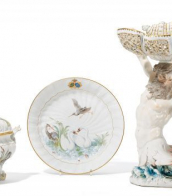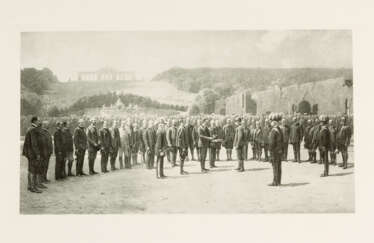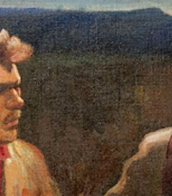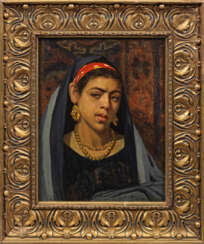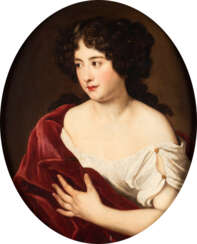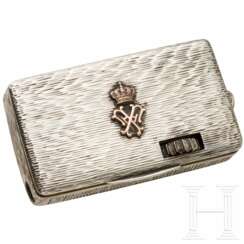franz ferdinand






Ferdinand Staeger was a Czech-born German symbolist painter and graphic artist, illustrator and fabric designer.
Staeger studied at the School of Technical Design in Brno and then the School of Applied Arts in Prague, from 1908 he lived in Munich and collaborated with the magazine Jugend. He was a participant in the First World War, his war drawings are characterized by humanity. After the war he illustrated books by Gerhard Hauptmann, Josef von Eichendorff, Eduard Mörike and Adalbert Stifter with great success.
During the Third Reich, Staeger collaborated with the authorities by painting several propaganda pictures, for which he was awarded the title of professor. In 1943 he lost his home in Munich to Allied bombs and many works were lost.
After World War II, he painted in an impressionist style, creating paintings of mythical, mystical, symbolic and religious themes. Many works belong to the genre of "magic realism". Staeger is also known as a tapestry designer, master of etching and ex-libris, and was a member of the Association of German Artists. His wife Sidonie Springer (1878-1937) was also a painter and graphic artist.


Ferdinand Frick was a Swedish sculptor of bronze sculpture of the Art Deco period.


Ferdinand Spindel was a German artist who worked as a painter, sculptor and object artist, among other things.


Franz Lenk was a German modernist painter.


Franz Lenk was a German modernist painter.


Ferdinand Staeger was a Czech-born German symbolist painter and graphic artist, illustrator and fabric designer.
Staeger studied at the School of Technical Design in Brno and then the School of Applied Arts in Prague, from 1908 he lived in Munich and collaborated with the magazine Jugend. He was a participant in the First World War, his war drawings are characterized by humanity. After the war he illustrated books by Gerhard Hauptmann, Josef von Eichendorff, Eduard Mörike and Adalbert Stifter with great success.
During the Third Reich, Staeger collaborated with the authorities by painting several propaganda pictures, for which he was awarded the title of professor. In 1943 he lost his home in Munich to Allied bombs and many works were lost.
After World War II, he painted in an impressionist style, creating paintings of mythical, mystical, symbolic and religious themes. Many works belong to the genre of "magic realism". Staeger is also known as a tapestry designer, master of etching and ex-libris, and was a member of the Association of German Artists. His wife Sidonie Springer (1878-1937) was also a painter and graphic artist.


Franz Peter Schubert was an Austrian composer who combined classical and romantic music.
Franz was born into a musical family, where a quartet played at home and his father founded a music school. The future composer played the violin, piano and organ. At the age of 10, the young Schubert won a place in the Vienna Imperial Court Chapel Choir and quickly gained a reputation as an aspiring composer, writing several light string quartets. In 1814 Schubert began teaching, but at the same time he continuously composed a wide variety of works. These included 145 songs, the Second and Third Symphonies, two sonatas and a number of miniatures for solo piano, two masses and other short choral works, four stage works, a string quartet, and much more.
Soon the popularity of Schubert's dance music and songs grew so much that musical evenings known as "Schubertiades", where Schubert performed his own compositions while accompanying himself on the piano, became fashionable in Vienna. The talented composer effortlessly composed many masterpieces, including the song cycles Lonely Müllerin and Winterreise, as well as the Eighth ("Unfinished") and Ninth ("Great") Symphonies, the Octet for winds, three string quartets, two piano trios, the String Quintet, the Wanderer Fantasia and six sonatas for solo piano.
Despite his boundless talent, Franz Schubert was always insecure, indecisive and reserved, causing him to be tormented by lack of money throughout his life. The composer was able to buy his own piano almost at the end of his short life - with the royalties from his first and only public concert in March 1828. Eight months later, the brilliant musician died of illness at the age of 31.


Jacob Ferdinand Voet was a Flemish High Baroque portrait painter.
Jacob was born in the family of the painter Elias Voet, in 1663 went to Rome, where he lived until 1680 and worked successfully. Here he became a respected member of the association of Dutch and Flemish artists Bentvueghels. The Roman aristocracy appreciated Voet's skill, he was also eagerly commissioned to paint portraits of English and other Europeans coming to Italy, and he painted a portrait of Queen Christina of Sweden.
Later in Florence, Jacob Voet painted portraits of the Medici family, and around 1685 he was appointed court painter in Paris, where he lived until the end of his days. In Paris he mainly painted portraits of political and military figures.
















